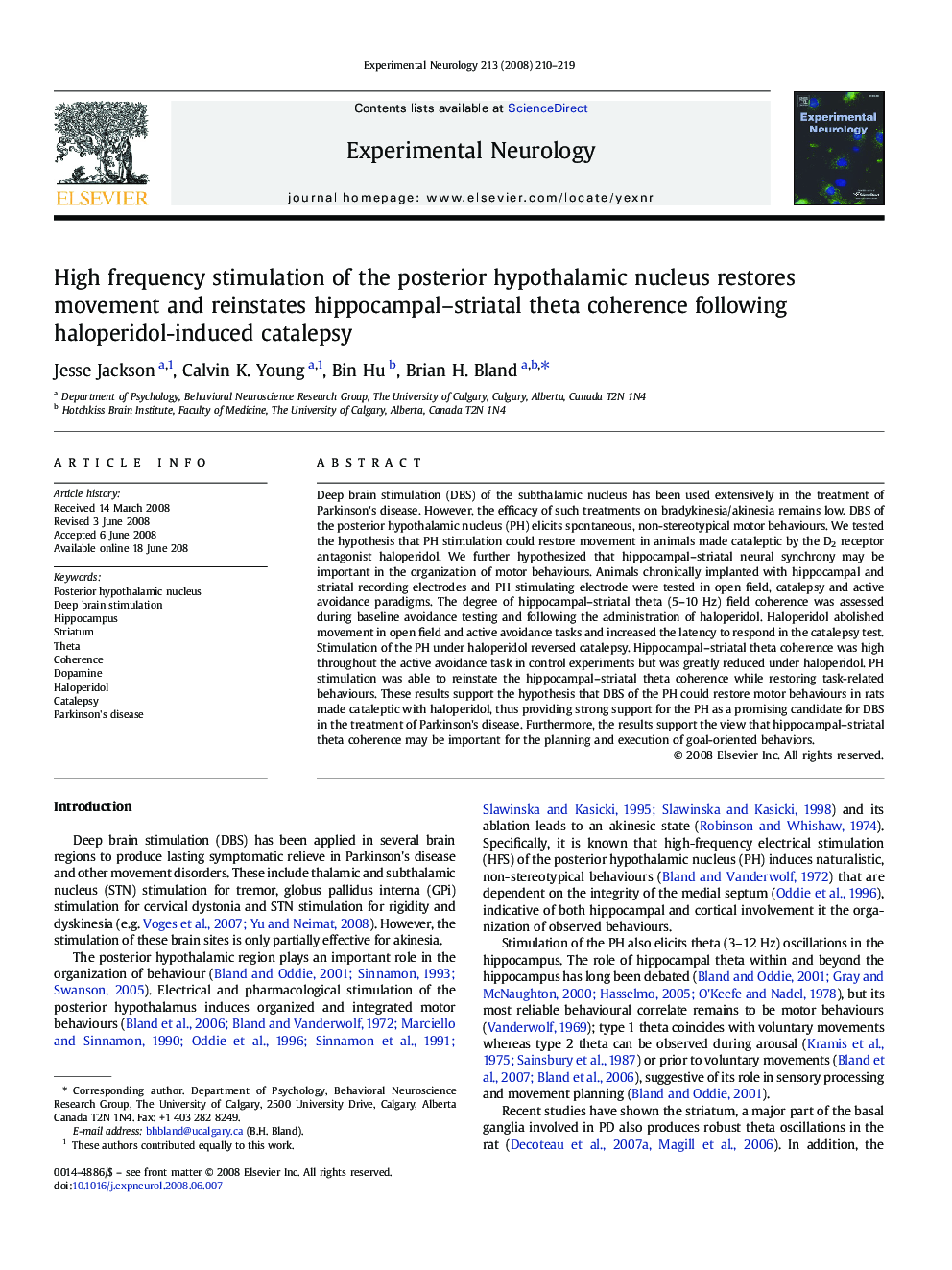| Article ID | Journal | Published Year | Pages | File Type |
|---|---|---|---|---|
| 3056433 | Experimental Neurology | 2008 | 10 Pages |
Deep brain stimulation (DBS) of the subthalamic nucleus has been used extensively in the treatment of Parkinson's disease. However, the efficacy of such treatments on bradykinesia/akinesia remains low. DBS of the posterior hypothalamic nucleus (PH) elicits spontaneous, non-stereotypical motor behaviours. We tested the hypothesis that PH stimulation could restore movement in animals made cataleptic by the D2 receptor antagonist haloperidol. We further hypothesized that hippocampal–striatal neural synchrony may be important in the organization of motor behaviours. Animals chronically implanted with hippocampal and striatal recording electrodes and PH stimulating electrode were tested in open field, catalepsy and active avoidance paradigms. The degree of hippocampal–striatal theta (5–10 Hz) field coherence was assessed during baseline avoidance testing and following the administration of haloperidol. Haloperidol abolished movement in open field and active avoidance tasks and increased the latency to respond in the catalepsy test. Stimulation of the PH under haloperidol reversed catalepsy. Hippocampal–striatal theta coherence was high throughout the active avoidance task in control experiments but was greatly reduced under haloperidol. PH stimulation was able to reinstate the hippocampal–striatal theta coherence while restoring task-related behaviours. These results support the hypothesis that DBS of the PH could restore motor behaviours in rats made cataleptic with haloperidol, thus providing strong support for the PH as a promising candidate for DBS in the treatment of Parkinson's disease. Furthermore, the results support the view that hippocampal–striatal theta coherence may be important for the planning and execution of goal-oriented behaviors.
